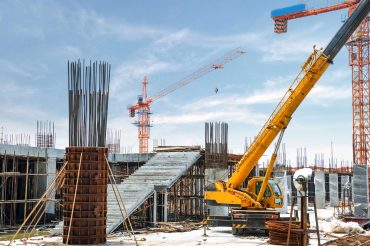Engineering & Electrical
DESCRIPTION
Architecture is both the process and the product of planning, designing, and constructing buildings and other physical structures. Architectural works, in the material form of buildings, are often perceived as cultural symbols and as works of art. Historical civilizations are often identified with their surviving architectural achievements.
Architecture has to do with planning, designing and constructing form, space and ambience to reflect functional, technical, social, environmental and aesthetic considerations. It requires the creative manipulation and coordination of materials and technology, and of light and shadow. Often, conflicting requirements must be resolved. The practice of Architecture also encompasses the pragmatic aspects of realizing buildings and structures, including scheduling, cost estimation and construction administration. Documentation produced by architects, typically drawings, plans and technical specifications, defines thestructure and/or behavior of a building or other kind of system that is to be or has been constructed.
SERVICE BROCHURE

Early Asian writings on architecture include the Kao Gong Ji of China from the 7th–5th centuries BCE; the Shilpa Shastras of ancient India and Manjusri Vasthu Vidya Sastra of Sri Lanka.
The architecture of different parts of Asia developed along different lines from that of Europe; Buddhist, Hindu and Sikh architecture each having different characteristics. Buddhist architecture, in particular, showed great regional diversity. Hindu temple architecture, which developed around the 3rd century BCE, is governed by concepts laid down in the Shastras, and is concerned with expressing the macrocosm and the microcosm. In many Asian countries, pantheistic religion led to architectural forms that were designed specifically to enhance the natural landscape.
Islamic architecture began in the 7th century CE, incorporating architectural forms from the ancient Middle East and Byzantium, but also developing features to suit the religious and social needs of the society. Examples can be found throughout the Middle East, North Africa, Spain and the Indian Sub-continent. The widespread application of the pointed arch was to influence European architecture of the Medieval period.
In Europe during the Medieval period, guilds were formed by craftsmen to organize their trades and written contracts have survived, particularly in relation to ecclesiastical buildings. The role of architect was usually one with that of master mason, or Magister lathomorum as they are sometimes described in contemporary documents.
In Renaissance Europe, from about 1400 onwards, there was a revival of Classical learning accompanied by the development of Renaissance Humanism which placed greater emphasis on the role of the individual in society than had been the case during the Medieval period. Buildings were ascribed to specific architects – Brunelleschi, Alberti, Michelangelo, Palladio – and the cult of the individual had begun. There was still no dividing line between artist, architect and engineer, or any of the related vocations, and the appellation was often one of regional preference.
I am text block. Click edit button to change this text. Lorem ipsum dolor sit amet, consectetur adipiscing elit. Ut elit tellus, luctus nec ullamcorper mattis, pulvinar dapibus leo.













